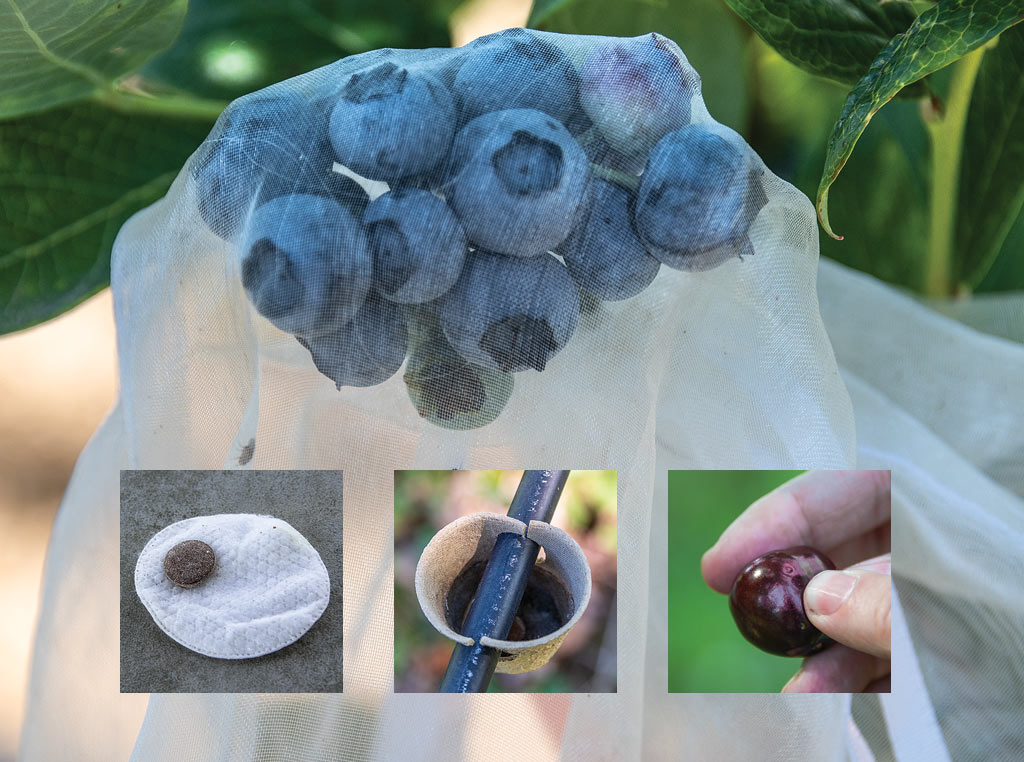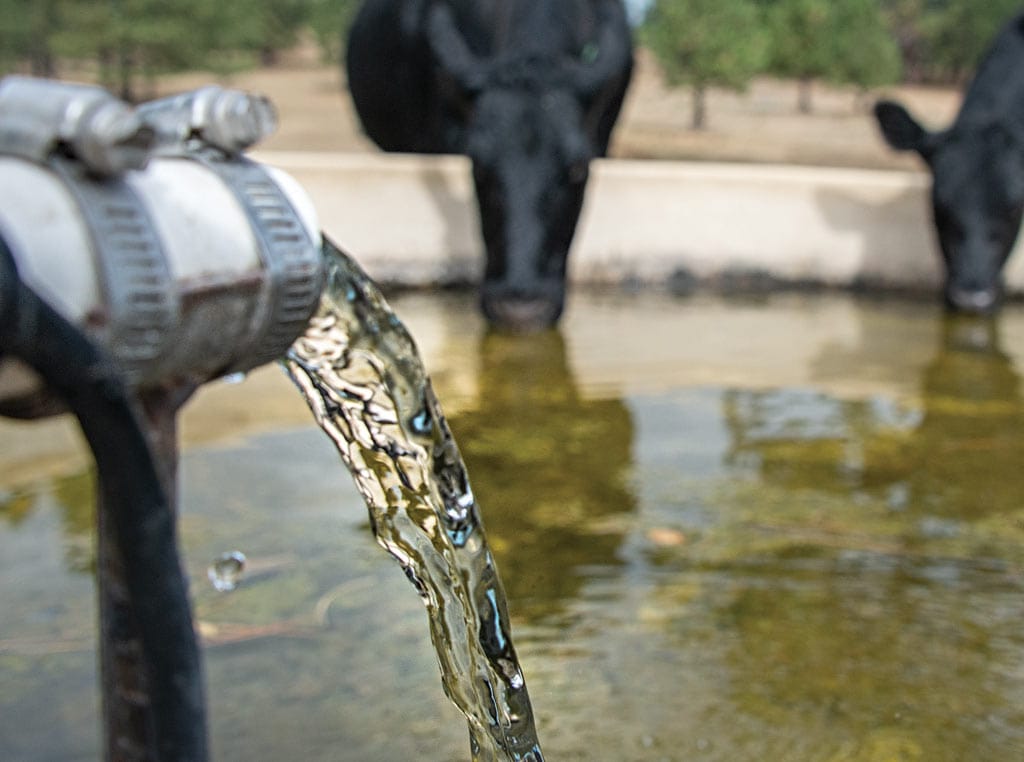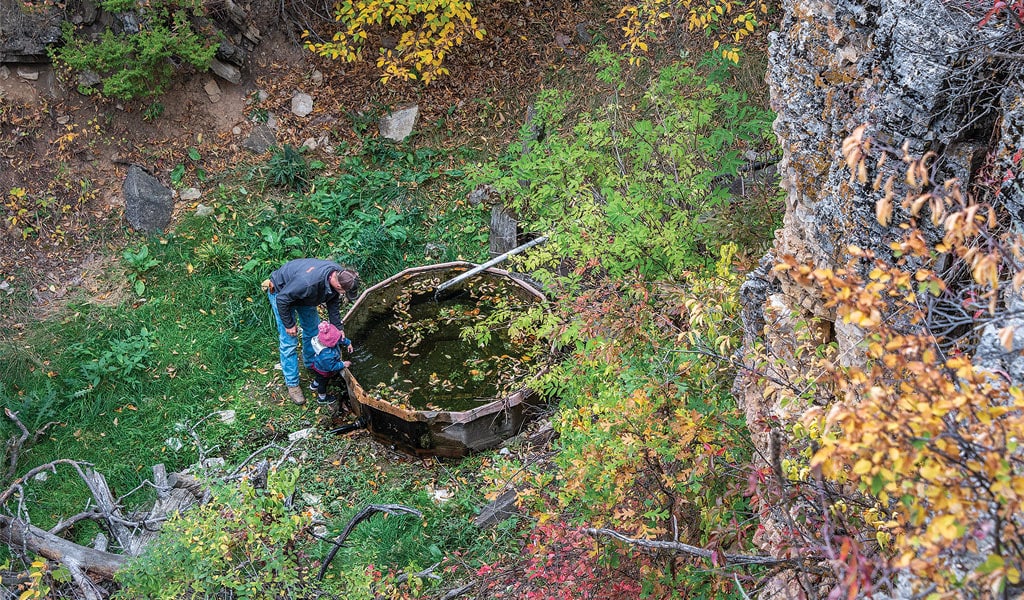Agriculture, Farm Operation March 01, 2022
Dropping the Water Anchor
Solar pumps and poly piping move prime water – and the herd – to prime grazing.
Water is the primary hurdle keeping livestock producers from optimizing their grazing resource. Andrew Snyder has a way around that hurdle—or over, under, or through it. His family’s solution is mobile solar pumps and miles of above ground temporary poly pipe.
High density poly pipe in 2,000-foot segments radiate from premium water sources. Easily connected and disconnected, the pipe lengths are towed by ATVs where needed as cattle are rotated.
Black pipes drop over cliffs, snake under interstates and ramble across the range bringing water and cattle to underutilized areas.
“Supplying water to strategic points has allowed us to increase stocking rates, change season of use on pastures and advance our intensive rotational grazing system,” Snyder says. “Our grazing resource is now healthier and more robust.”
Snyder Ranch straddles the interstate near Tillford, South Dakota and runs along the rugged Black Hills National Forest where they lease grazing for their 600-head herd. The terrain and checkerboard pastures due to the interstate and urban encroachment magnify their water woes.
Forest and private leases don’t lend themselves to installing permanent pipelines. “You can’t just trench water where you want. With this system we can run a pipe on top of the ground and move it when done. You can drive over it so there’s no inconvenience and no property damage,” Snyder says.
Then there’s cost. The Snyders, including Andrew’s brother Daniel and father Ken and their families, use four solar pumps and miles of poly pipe.
Though built on frames to allow for movement, pumps and panels stay put while pipes do the leg work. One pump taps into a spring-fed reservoir, another draws from a crystal clear spring-fed tank at a ravine bottom.
Above. Movable poly pipe makes a web across the Snyder Ranch connecting excellent water to remote and formerly underutilized grazing. The flexible systems allow the Snyders to both graze and rest more of their acres.
Measuring up. Each pump, solar panel and controller costs roughly $5,000 with an additional $5,000 in pipe and tanks per system.
The pipelines are mobile, leaks are easy to spot and fix, and solar works well even in South Dakota. Grapefruit-sized hail that dented steel cattle panels only took out one solar panel, so they’ve proven fairly rugged, too, Snyder says.
They’re not without limits. The above-ground pipe systems can’t be used in winter in northern climates due to freezing and water storage and monitoring is often necessary as pumps don’t run at night.
Since most areas the Snyders are trying to reach are grazed when days are long and the sun shines, these drawbacks are non-issues.
Progress. Bumping through forest, Snyder’s ATV breaks onto an open hilltop meadow. Brown with drought, there’s still plenty of grass. The herd didn’t used to linger here. Instead they hung in the ravine bottom near water, he says.
Now, water is piped straight up a cliff to a tank. Cows stroll easily to drink and go right back to grazing.
“There’s a long narrow pasture along the interstate with water at one end. We now pump water to a tank in the middle of the pasture from a dam across the interstate,” Snyder says.
They’re able to easily move water three quarters of a mile to better use that pasture. Another pipeline lifts water 300 feet in elevation where electric fence holds cattle to more remote grazing.
“We’re tapping into grazing that wasn’t available before and building a healthier forage base by resting ground that used to get hit hard,” Snyder says. “It’s exciting to see the positive changes in our native range.” ‡
Read More

AGRICULTURE, EDUCATION
Following Their Noses
Innovative decoy cuts insecticide use dramatically.

AGRICULTURE, SPECIALTY/NICHE
Crickets...no, really
Iowa farmer finds niche with edible insects.


